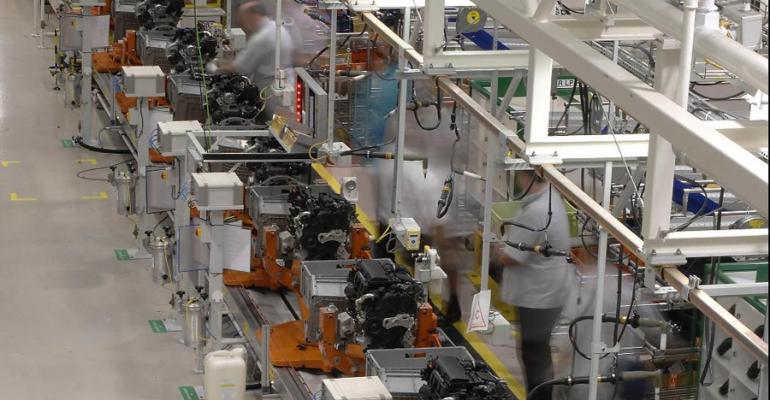ROUEN, France – PSA Peugeot Citroen installs selective catalytic reduction systems on all its diesel engines to meet future oxides-of-nitrogen emissions rules.
The SCR system, which requires regular injections of urea-based fluid in the exhaust stream, is more expensive than trapping NOx in a special coating on the catalyst and later burning it off, but it is more efficient.
“We have to be ready for Sept. 1, 2014, and we are ready,” says Christian Chapelle, PSA vice president-powertrain and chassis, at the Diesel Powertrain Congress here sponsored by the French automotive engineering society SIA. “We are ready with our preferred suppliers for a full SCR.”
PSA apparently is alone among major auto makers in choosing the technology. Although Ford and PSA jointly developed the next-generation diesels, Ford will use NOx traps as well as SCR systems.
“On the Ford side, we have a different approach,” says Andreas Shamel, who runs Ford’s European research center in Aachen, Germany. “We have nothing against SCR. We are in mass production with SCR on the truck side.
“It comes down to affordability and taking space away from the car. On light trucks or passenger cars, we will have various approaches. We don’t have the one-size-fits-all.”
NOx traps use the same space within an exhaust system as existing diesel-particle filters, while an SCR system needs a separate tank and injector system. NOx emissions rules can be met with the NOx trap on smaller vehicles, while larger vehicles often require the costlier SCR technology.
Renault’s approach to the two systems is typical.
“All the new trucks that will be launched at the end of next year will be SCR,” says Gaspar Gascon-Abellan, vice president-powertrain strategy. “Passenger cars will get SCR or NOx traps, depending on the severity of the application. We take care to make the right choice, not to sell technology by itself but to make a cost- efficient application for everybody.”
The debate, says John Fuerst, general manager-diesel systems for Delphi, is whether to go with a “marketing message like PSA, or technical solutions with lower cost.”
PSA has taken similar action before, when more than a decade ago it introduced diesel-particulate filters that weren’t needed to meet emissions rules then in effect but did carry a message about clean-diesel exhaust. In addition, by going into mass production, PSA lowered the system’s unit cost.
“PSA has made a non-conventional choice,” Chapelle says. When then-CEO Jean-Martin Folz decided in 1998 to introduce particle filters, he told his engineers the technology would be seen “everywhere” in a few years.
In French, the filters are called “filtres à particules,” or FAP, but Chapelle says that inside PSA, FAP is known as “Folz a promis,” (Folz promised).
“We want to do the same with SCR,” Chapelle says. With the SCR system, the diesel will have no problems meeting NOx regulations.
“To keep the advantage of diesel, we have to keep the advantage in fuel economy. And for that, for Euro 6 (allowable emissions levels) the challenge will be the NOx, to kill the NOx and keep the (carbon-dioxide) advantage at an affordable price.”




